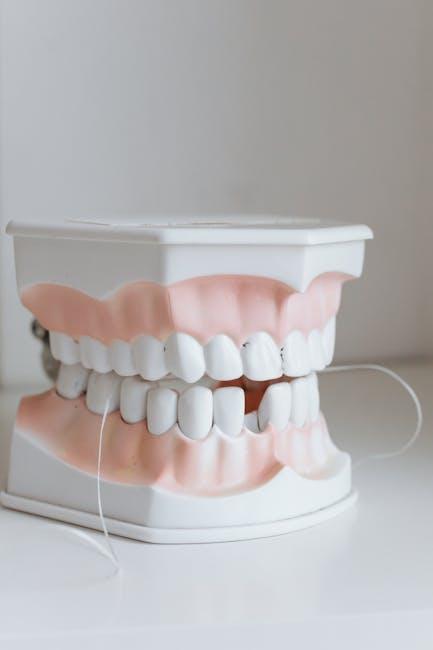Fluoride Ban Could Create Cavities For 1 Of Every 3 U.S. Kids – U.S. News & World Report
In recent discussions surrounding public health, fluoride has emerged as a focal point, especially in the realm of pediatric dental care. With proposed regulations and community debates about banning fluoride from drinking water, experts warn of a looming dental health crisis. Research indicates that removing fluoride could lead to a surge in cavities, potentially affecting 1 in every 3 U.S. children. This article delves into the facts behind the fluoride ban, the benefits of fluoride in preventing tooth decay, and actionable steps parents can take to protect their children’s oral health.
What Is Fluoride and Why Is It Important?
Fluoride is a mineral naturally found in water, soil, and various foods. It has been widely recognized for its ability to strengthen tooth enamel and prevent dental cavities. Since the mid-20th century, adding fluoride to public water supplies has been a cost-effective and proven way to reduce tooth decay across all age groups, particularly among children.
Key Benefits of Fluoride
- Strengthens enamel: Fluoride helps remineralize weakened tooth enamel, making it more resistant to acid attacks from bacteria.
- Reduces cavities: Fluoride use can decrease cavity rates by up to 25% in children and adults.
- Cost-effective public health measure: Community water fluoridation has saved billions in dental treatment costs.
Fluoride Ban: What Are the Consequences?
The removal or ban of fluoride from community water systems could have serious consequences, especially for children who rely heavily on fluoridated water for cavity prevention. According to U.S. News & World Report, experts estimate this ban could lead to cavities in approximately 33% of U.S. children.
Why Are Kids at Risk?
Children’s teeth are still developing and are especially vulnerable to decay caused by plaque bacteria. Many children do not maintain optimal oral hygiene, making fluoride’s cavity-preventing properties vital. Additionally, children from low-income families often lack access to quality dental care and fluoridated toothpaste, increasing their risk further.
Projected Impact of Fluoride Ban
| Impact | Estimated Increase |
|---|---|
| Children with cavities | +33% |
| Dental treatment costs | +Millions annually |
| Missed school days due to dental pain | Substantial increase |
The Science Behind the Fluoride Debate
While fluoride is widely endorsed by dentists, some community groups oppose its use citing health concerns. However, decades of scientific research confirm fluoride’s safety and efficacy at recommended levels. The potential risks of fluoride overuse exist mostly with excessive ingestion, not with standard water fluoridation.
Scientific Consensus
- The Centers for Disease Control and Prevention (CDC) lists water fluoridation as one of the top public health achievements of the 20th century.
- The American Dental Association (ADA) supports fluoridation as safe and effective.
- Multiple large-scale studies show significant decreases in tooth decay where fluoride is present.
Practical Tips to Protect Kids’ Dental Health If Fluoride Is Unavailable
If your community moves forward with a fluoride ban, don’t despair. You can still help reduce your child’s risk of cavities by implementing alternative dental health habits:
- Use fluoride toothpaste: Continue using fluoride toothpaste unless advised otherwise by a dentist.
- Encourage regular brushing and flossing: At least twice a day with proper technique.
- Limit sugary and acidic foods: These contribute heavily to tooth decay.
- Visit the dentist regularly: Schedule dental check-ups and cleanings twice a year.
- Consider fluoride supplements: After consulting a pediatric dentist, supplements might be recommended if water fluoridation ends.
- Promote healthy diet habits: Foods rich in calcium and phosphorus aid enamel repair.
Case Study: Impact of Fluoride Removal in Communities
Several U.S. and international communities that halted water fluoridation have reported dramatic increases in childhood cavities within a few years.
| Community | Year Fluoride Removed | Cavity Rate Increase | Notes |
|---|---|---|---|
| Portland, Oregon | 2013 | +20% | Subsequent efforts to reinstate fluoridation are underway. |
| Calgary, Canada | 2011 | +14% | Dental expenditures increased significantly. |
Firsthand Experience: A Parent’s Perspective
Jessica, a mother of two in a city debating fluoride removal, shares her concerns:
“When I heard about the fluoride ban, I immediately worried about my kids’ teeth. My younger daughter already had cavities last year. I made sure they brush twice daily and increased dental visits, but I’m scared that without fluoride, their teeth won’t have that extra protection.”
Jessica’s story echoes many parents who recognize fluoride’s role after seeing its preventive effects firsthand.
Conclusion
The possibility of a fluoride ban carries serious implications for childhood dental health in the U.S. With studies warning that up to 1 in 3 children could develop cavities without fluoride’s protection, maintaining access to this mineral remains crucial. Both public policy and personal dental hygiene habits play a role in protecting kids’ teeth. If fluoride removal becomes inevitable, parents and caregivers must take proactive steps to safeguard oral health through routine care and professional guidance.
Ultimately, fluoride is more than just a mineral — it’s a public health cornerstone in the fight against tooth decay, and its removal may create cavities for millions of vulnerable children nationwide.


